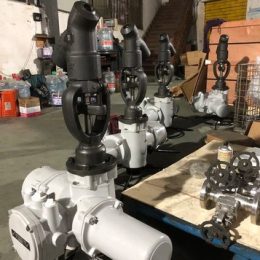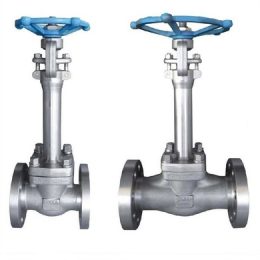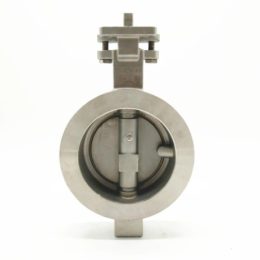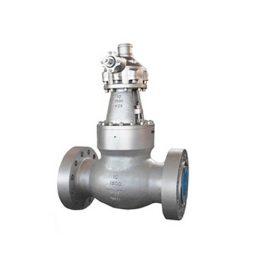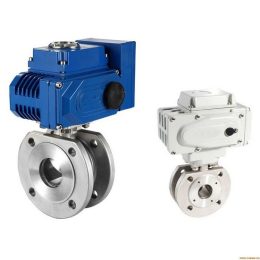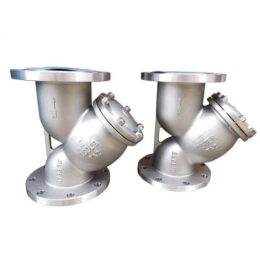Everything You Need to Know About Globe Valves: Types, Parts, and Working Principles

This article covers everything you need to know about globe valves, including their types, parts, and working principles. We also provide tips on selecting the ideal globe valve based on factors like material, size, and pressure limits.
Globe valves are regulating or shutoff valves used to control liquid flow in various applications. They come in different styles and configurations to meet specific needs. Choosing the right globe valve for your application can be a challenge due to its various shapes and design variants. Globe valves come in different materials, sizes, and pressure limits, so it’s crucial to select the appropriate one to get maximum performance from your valve.
Now, let’s take a detailed look at globe valves and how to choose the best one for your needs.
What Are Globe Valves?
A globe valve is a linear motion closing-down valve that uses a disc to start, stop, and throttle fluid flow. The seat opening varies in direct proportion to disc travel, making it ideal for tasks that require controlling flow rate.
Globe valves can be used in various applications, such as steam and condensate service, temperature or pressure regulation in pipelines, and even nuclear plant process control. They come with various body and stem designs that can be tailored to meet specific requirements.
Globe valve disc designs come in three basic forms: ball, composition, and plug. The ball disc is ideal for low-pressure or temperature applications, while the composition disk features a hard insert ring that ensures tight closure. Finally, plug disks offer better throttling than either ball or composition disks and may be used when hard service requirements exist.
Globe valves are available in several body patterns, with the three most popular being standard, angle, and Y-shaped. Of these three options, the standard pattern is by far the most prevalent and is typically used for throttling services.
Parts of a Globe Valve
A typical globe valve consists of the following parts:
- This is a list of various parts that are involved in the construction of a valve. Valves are an essential part of many mechanical systems and are used to control the flow of fluids or gases. Here are some further elaborations on the different parts mentioned:
- Back Seat: This is a secondary seating feature that is located behind the primary seat ring. Its purpose is to provide a seal to prevent any leakage of the working fluid from the valve.
- Bonnet: This is the cover that is placed over the valve body to protect it from the environment. It also provides easy access to the valve internals for maintenance or repair work.
- Disc or Plug: This is the part of the valve that moves up or down to allow or block the fluid flow. It is designed in such a way that it provides a tight seal when it is in the closed position.
- Gland Bolts and Nuts: These are the bolts and nuts that are used to secure the gland flange and gland bushing to the valve body. They are tightened to ensure that the packing is compressed tightly around the stem to prevent any leakage.
- Gland Bushing and Flange: This is the part of the valve that provides the seal around the valve stem. It is made up of a bushing that fits tightly around the stem and a flange that is bolted to the valve body.
- Handwheel or Mechanical Actuator: This is the part of the valve that is used to operate it. A handwheel is manually turned to open or close the valve while a mechanical actuator is powered by an external source such as an electric motor or pneumatic cylinder.
- Packing: This is a material that is used to seal the valve stem to prevent any leakage. It is placed around the stem and compressed by the gland flange to provide a tight seal.
- Pressure Seal Gasket: This is a gasket that is used to seal the valve body to the piping flange. It is designed to withstand high pressure and temperature and is typically made of a metal material.
- Seat Ring: This is the part of the valve that provides the primary sealing surface. It is designed to mate with the disc or plug to provide a tight seal when in the closed position.
- Stem: This is the part of the valve that connects the disc or plug to the actuator. It is designed to transfer the motion of the actuator to the disc or plug to allow it to move up or down.
- Valve Body with a Globular Shape: This is the part of the valve that contains all the other parts mentioned above. It is designed in a globular shape to provide maximum strength and durability while minimizing the weight of the valve.
- Yoke: This is the part of the valve that provides support to the actuator. It is typically mounted on the valve body and is designed to transfer the force from the actuator to the stem.
How Globe Valves Work?
A globe valve is a multi-directional device that can open, close, or throttle fluid flow. It consists of five major parts: the valve body, bonnet, handwheel, stem, and plug.
Valve Stem: The stem of a globe valve connects with the handwheel and operates the opening or closing action of the valve. It may be either smooth sliding or threaded.
Bonnet: The bonnet of a globe valve attaches to the stem and protects it from damage. Its seal, made from wear-resistant material, provides leak-proof closure for any media inside the valve.
Ball Disc: The valve disc is another important element of a globe valve, used for low-temperature and low-pressure applications.
Seat Ring: The seat ring of a globe valve is where the disc fits and stops the fluid flow. Generally, this part can be screwed or threaded into an existing thread cut in the valve body to prevent removal during repairs or servicing.
Disc and Seat Capabilities: Globe valve discs come in various patterns, each providing its own advantages.
Globe valves are typically mounted so that the pressure is above the disc in high-temperature steam service and below it in lower-temperature or lower-pressure applications. This makes for easier operation and protects packing while reducing erosive action on seat and disc faces.
Generally, globe valves are designed for straight-through flow, with ports oriented at right angles to the pipe axis. However, they come in various configurations, most often two-port but also three-port varieties.
Types of Globe Valves Available
Globe valves are widely used in industrial and marine applications to start, stop, and regulate flow, as well as isolate and throttle functions. However, some are specialized for specific tasks or environments.
Globe Valves Types: Globe valves can be divided into three basic body styles: Tee, Angle, and Wye. Each style offers its own advantages and can be utilized in various applications.
Tee Pattern: This type of globe valve is the most commonly used. It features a z-shaped diaphragm that allows its stem and disc to pivot perpendicular to the horizontal line. While it works well for throttling applications, its low flow coefficient and higher pressure drop make it less suitable for high-pressure service than Y-body or Angle valves.
Y-body Globe Valves: Y-body globe valves produce linear action due to their inclined inlet and outlet ports, which minimizes pressure drop in this design. Furthermore, they maintain their seat and stem at a 45-degree angle for an easier flow path when fully opened. These valves can be secured to a metal, plastic, or rubber bonnet by welding, bolting, or screwing it on. They can be repaired and replaced in the field without disassembling and require minimal service for ease of maintenance.
Angle Valves: The Angle Pattern Globe Valve has the two ends of the valve body oriented at right angles, which reduces flow resistance and allows fluid to discharge downward more symmetrically. This is useful in applications with pulsating flows. The angular design of this valve’s endpoints makes it a great option for media with pulse or oscillation. It can be tailored to various flow characteristics and offers numerous advantages, such as:
Needle Type: The needle-type globe valve is ideal for applications requiring high-pressure throttling or control. It features an internal nonmetallic ring that provides superior shutoff performance.
Ball Type: The ball globe valve is an ideal choice for low-pressure systems. It features an internal ring to improve throttling, as well as a composite plug that can be installed to achieve more reliable shutoff.
Composite Type: The composite globe valve is ideal for low-pressure systems that require more than just throttling yet aren’t too hot or cold. It features an internal ring to offer additional control while still being easy to maintain; plus, it comes equipped with encapsulated reversible seats for extended lifespan and ease of service.
Limit Switch: Globe valves may come equipped with a limit switch that limits how far they open or close during throttling operations. This feature helps protect the valve stem and disc during such operations.
Positioners: Globe valves come equipped with a positioning feature that enables the operator to determine how open or closed the valve is for throttling. These capabilities can be invaluable tools for operators and process engineers in managing valve operations.
Globe valves are a ubiquitous part of most liquid and gas industrial applications. They come in an extensive selection of styles, types, and materials to meet the individual requirements of every application. Whether you need a manual handwheel valve, a quick-opening valve, or something in between, an experienced engineering professional can advise the right solution for your situation.
Application of Globe Valve
A globe valve is a type of valve that restricts or stops the fluid flow. They’re commonly found in piping systems transporting corrosives, viscous, or highly pressurized media.
They come in a range of patterns, each offering its own advantages. Furthermore, their ease of upkeep and ability to be repaired or replaced makes them an economical choice for many applications.
As its name implies, globe valves feature a spherical body. Two halves of this globe valve are separated by an internal baffle which contains an opening that acts as a seat for attaching a movable plug to close (or shut) the valve.
Globe valves are widely-used industrial valves that can start, stop and throttle fluid flow. They’re often found in systems requiring frequent throttling or regulating, such as vacuum systems, water hammer control, and systems operating at various temperatures.
Advantages of Globe Valves
- Good shutoff capability: Globe valves have good shutoff capability when used in a properly designed system. They can be used for flow or pressure regulating as well as complete shutoff of fluids. They are also reliable in high temperature and pressure services as well as in steam and condensate control. They are also a viable choice for nuclear plants and in applications with high differential pressures. The globe valve is a cylindrical body with a seat and a disk or plug. When closed, the disc presses against the seat ring to block liquid from passing through it.
- Moderate to good throttling capability: The moderate to good throttling capability of globe valves makes them an ideal choice for regulating and shutoff applications. They also have a relatively short stem opening or closing stroke and a reliable cut-off function. The disc of the globe valve is attached to the stem, and when it is lowered onto the seat, it affects closure or flow regulation. The valve seat and disc are very accurately machined to form a tight seal when the valve is closed.
- Shorter stroke compared to a gate valve: Advantages of globe valves include a shorter stroke compared to a gate valve and sturdy seals that ensure pipes are completely closed off when needed. The lower pressure drop compared to a gate valve also makes them less expensive to maintain. They can be used to regulate the flow of fluids, such as fuel gas, feedwater, steam, lube oil, and other systems. They have good shutoff capability and are available in several types. They can be sized to match the line size of the system they are installed in. However, using a smaller valve might cause an increase in the pressure drop.
- Available in several types: A globe valve is a type of industrial valve. They are available in several types and are used to control the flow of liquids and gases in industrial systems. They have a circular spherical body, which is divided by an internal baffle. A movable plug (disc) is screwed in to open or close the valve. The spherical body shape allows for the flow pipes to be smooth and rounded without creating additional pressure losses. This reduces head loss which can be a problem in high-velocity or higher-fluid systems. The spherical shape also allows for a symmetrical design, simplifying manufacturing and assembly. They are most commonly used in water applications.
- Easy to machine or resurface the seats: Globe valves have relatively easy maintenance as the discs and seats can be replaced fairly quickly. This makes them suitable for services where frequent valve maintenance is required. The globe valve’s short travel stroke reduces the number of turns necessary for opening and closing. This can save time and prevent valve parts from wearing out prematurely.
Disadvantages of Globe Valves
- Higher pressure drop compared to a gate valve: The main disadvantage of a globe valve is the higher pressure drop when fully open compared to a gate valve. This is because globe valves are designed to divert the flow of media around the plug disc rather than blocking it perpendicularly. The gate valve, on the other hand, is a linear motion valve and can be used for both shutoff and throttling purposes. It can also be operated mechanically, pneumatically, or electrically.
- Requires greater force to seat the valve: The greater force required to seat a globe valve in comparison with a gate valve can make it difficult to operate. This is especially true when the globe valve stems diameter requirements are higher than those of a gate valve. Aside from the additional forces, a globe valve also requires two changes in the direction of flow. This can cause resistance in liquid lines and an objectionable pressure drop.
How to Choose Between Globe Valve vs. Ball Valve
When selecting plumbing components, two primary valve types to consider are globe and ball valves. Both offer reliable on/off controls, each with distinct advantages that may be worth considering for your project.
When choosing a valve to control, start, or stop flow in a fluid system, it is essential to determine which type is most suitable for your application. The two most common types of fluid control valves are globe and ball valves.
Ball valves and globe valves differ in their closure elements. A ball valve features a spherical closure element that seals against an internal seat. In contrast, globe valves feature disk-shaped closure elements that fit onto an outer seat. When one opens the valve, fluid can pass through while the ball rotates to block its passage when closed.
FLUID Valve offers a comprehensive selection of valves, including globe, check gate, ball, butterfly, and air/oxygen control valves. Their product range encompasses six categories and thousands of variations. FLUID has earned its customers’ trust by producing high-quality casting balls, gate globe check wedge valves for various applications.
